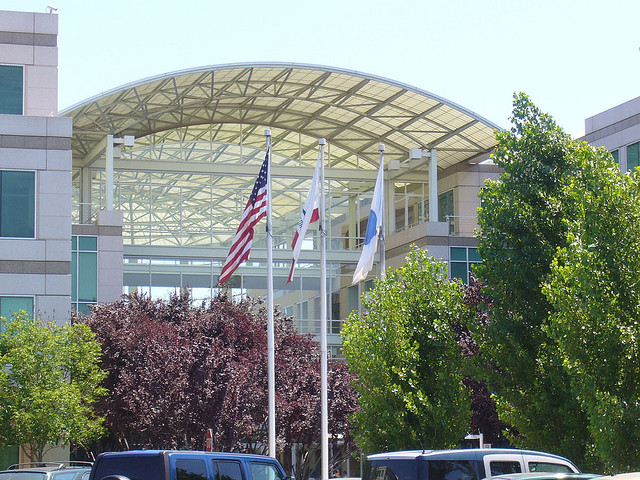An important area of focus in the Robeco Global Consumer Trends Equities fund is the emergence of the digital consumer. Consumers are spending more and more of their time and money on internet as a result of the strong growth in smartphones, tablets and other internet-linked gadgets. They are also using social media such as Facebook and Twitter more often and e-commerce is absorbing a larger portion of their monthly budget.
Where better in the world to get up to speed with developments relating to the digital consumer than the Bay Area of California? San Francisco and of course Silicon Valley – the technology Valhalla located on the south side of the bay – fall within this metropolitan area of more than seven million inhabitants. “The Bay Area is the place to be – not only is this where the head offices of the major players such as Google and Apple are located, leading conferences in the field of technology are also held here”, said Jack Neele, portfolio manager of RobecoGlobal Consumer Trends Equities fund.
Neele visited Morgan Stanley Technology, Media & Telecom Conference in San Francisco where as many as 240 representatives from the industry and 1200 investors gathered to discuss the major developments in these three sectors. “The combination of technology and media made it a useful visit, because an increasing amount of media consumption is occurring via the internet. On the last day of the conference we went to Silicon Valley by bus to visit some companies, one of which was Apple. We had an appointment there to talk to the financial top man, Luca Maestri, about the company’s future prospects”, related the portfolio manager.
The growth of mobile internet was a focus area again this year and three verbs dominated the discussion – wear, watch and pay. What are the most important developments from the perspective of the fund? That is the Jack Neele opinion:
1. Apple Watch – the most important wearable developed to date – as yet its impact is limited: The new Apple Watch is in the shops this month. Its market potential has fueled numerous discussions among analysts and investors. Some see it as a revolutionary product like the iPhone, of which there are currently around 300 million in use worldwide. Apple Watch should also ensure that the company enters new markets, such as the luxury goods sector. But others see the Apple Watch as a niche product with limited potential, a gadget like the many mobile fitness apps currently available. Which group is right?
I have taken up my own position somewhere between the two. Given Apple’s expected sales of USD 225 billion in 2015, I don’t expect the Apple Watch to make a significant contribution to the company’s earnings.
However, Apple Watch is the first wearable that consumers really want. Wearables are a new generation of mobile devices that can be worn on ones body. The Apple Watch has many handy functions like being able to phone easily, receive messages and retrieve your boarding pass, in addition to medical applications to monitor heart rate and blood pressure.
The Apple Watch’s major breakthrough will come when telecom companies start to offer it in combination with the iPhone. A bundling of the Apple Watch with a phone subscription could encourage many people to strap on this device. But initially the Apple Watch will only be sold in the Apple Store. In other words, I don’t expect to see the real breakthrough just yet.
2. Innovation is making video increasingly important on social media: Video for mobile internet is increasing in importance and Facebook is in a strong position. More hours of video are now being watched on Facebook than on Google subsidiary, Youtube. Most of the videos on Facebook are user generated content, for example, homemade footage of an Easter egg hunt that you can share with family members. But in the future Facebook may well start offering other content such as films and sport.
Facebook and Youtube both show advertising films, but the first offers important advantages from the user’s perspective. The users themselves click on the Facebook advertising films by choice, whereas the YouTube viewer is subjected to unsolicited commercials. I therefore expect Facebook to have considerable success when it comes to online video.
Another company that is betting heavily on video through new innovations is Twitter. Through a subsidiary company it has devised peer-to-peer streaming. This means that users can send live pictures via their telephones to their contacts. So you can watch live with someone. For example, footage of disasters or even football matches.
3. Market for mobile payments is growing rapidly and undergoing major changes. Firstly, I expect targeted takeovers by Paypal, which will be split off from eBay and gain a separate market valuation. I expect a higher valuation than it currently has under eBay, as Paypal is growing at a faster pace. This higher valuation can be used to help fund new acquisitions to bolster its market position. By issuing new shares the company can finance takeovers.
Facebook is also becoming more active in the field of peer-to-peer payments. The company announced that you can make payments to your friends via the Facebook Messenger chat function. A handy application, for example, if you go out for dinner with friends and want to chip in to pay a collective bill. This extra functionality is strengthening Facebook’s position in the market.
My visit to the Bay Area confirmed my impression that the technology, media and telecom sectors are all undergoing major changes, and that the latest developments are further strengthening the market positions of major players like Apple, Twitter and Facebook.
This publication is intended to provide investors with general information about Robeco’s specific capabilities, but it is not a recommendation to buy or sell specific securities or investment products.



 For Fórmate a Fondo
For Fórmate a Fondo